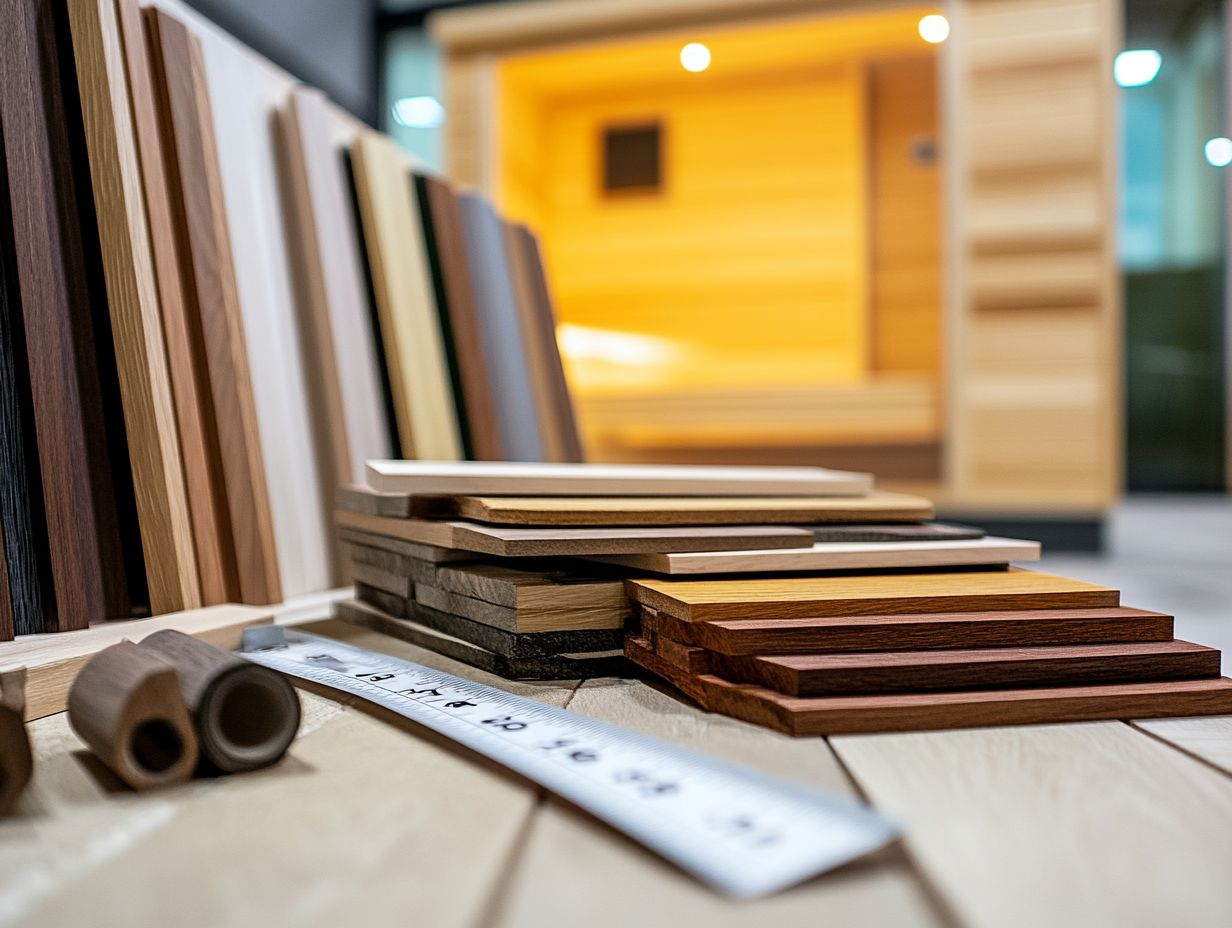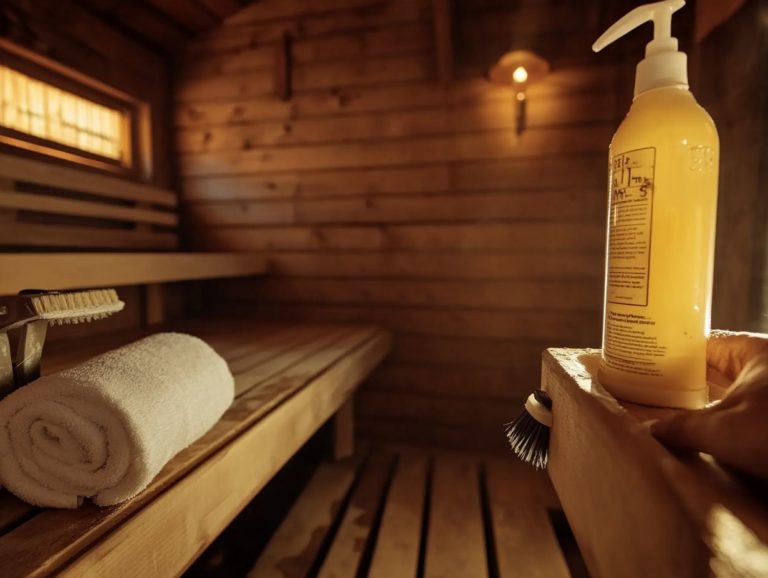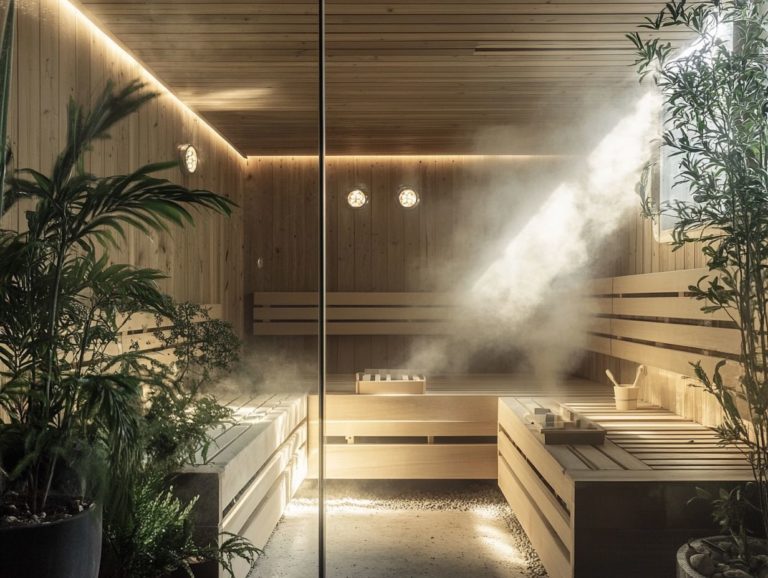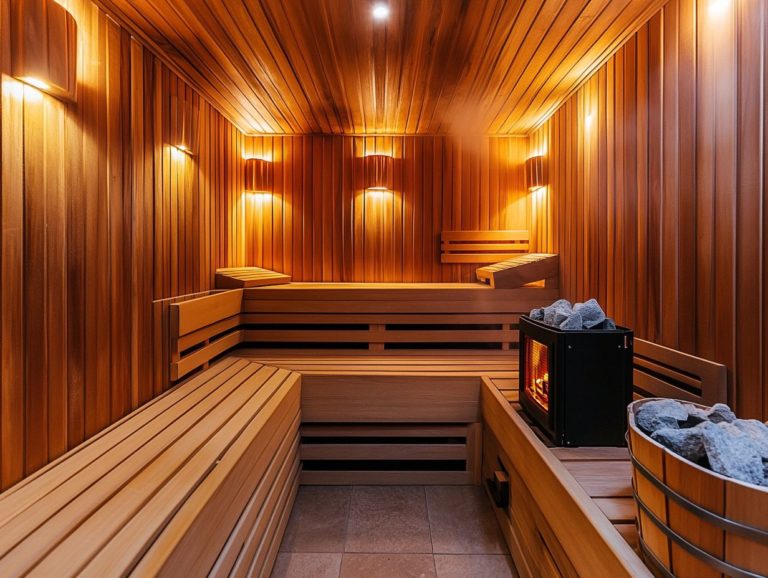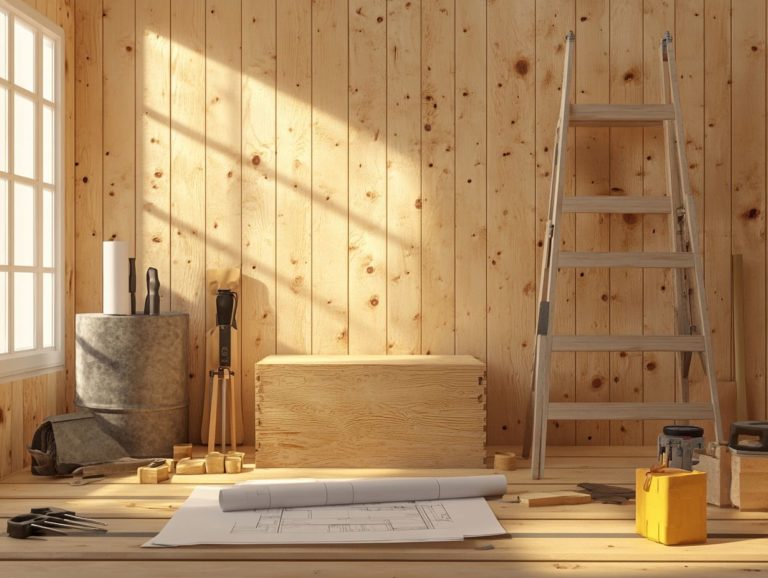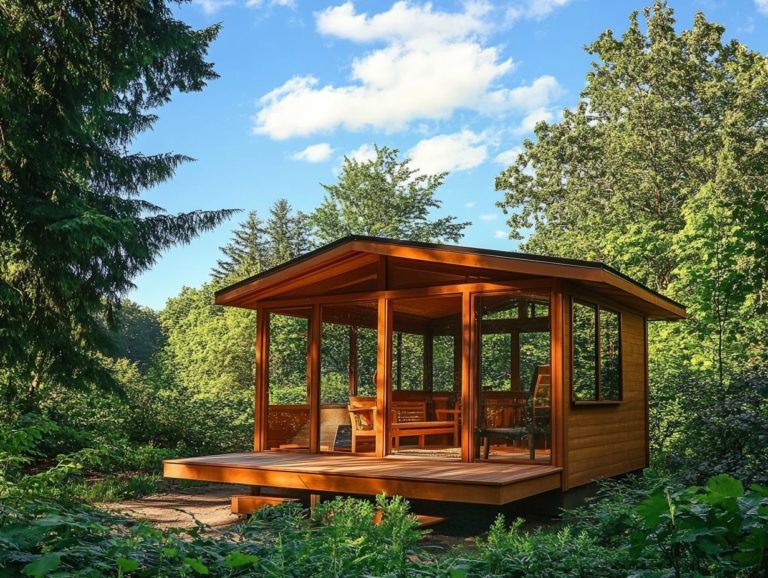“Choosing the Right Wood for Your Sauna”
When it comes to crafting the ideal sauna experience, selecting the right wood is absolutely essential. Create your perfect retreat!
Each type of wood brings its own unique qualities, enhancing both the aesthetic charm and practicality of your sauna. Factors such as durability and maintenance are vital in creating a sanctuary that remains welcoming for years ahead.
This article delves into the various woods typically used in saunas, offers guidance on preparation and upkeep, and highlights key considerations to assist you in making the optimal choice for your personal retreat.
Contents
- Key Takeaways:
- Why Choosing the Right Wood Matters
- Types of Wood for Saunas
- Factors to Consider when Choosing Sauna Wood
- Preparing the Sauna Wood
- Tips for Maintaining Sauna Wood
- Proper Care and Maintenance for Longevity
- Frequently Asked Questions
- What factors should I consider when choosing the right wood for my sauna?
- What types of wood are recommended for saunas, and what are their qualities?
- Why is cedar a popular choice for sauna wood?
- Can I use pressure-treated wood for my sauna?
- Do I need to treat or finish the wood for my sauna?
- Is it okay to mix different types of wood in my sauna?
Key Takeaways:
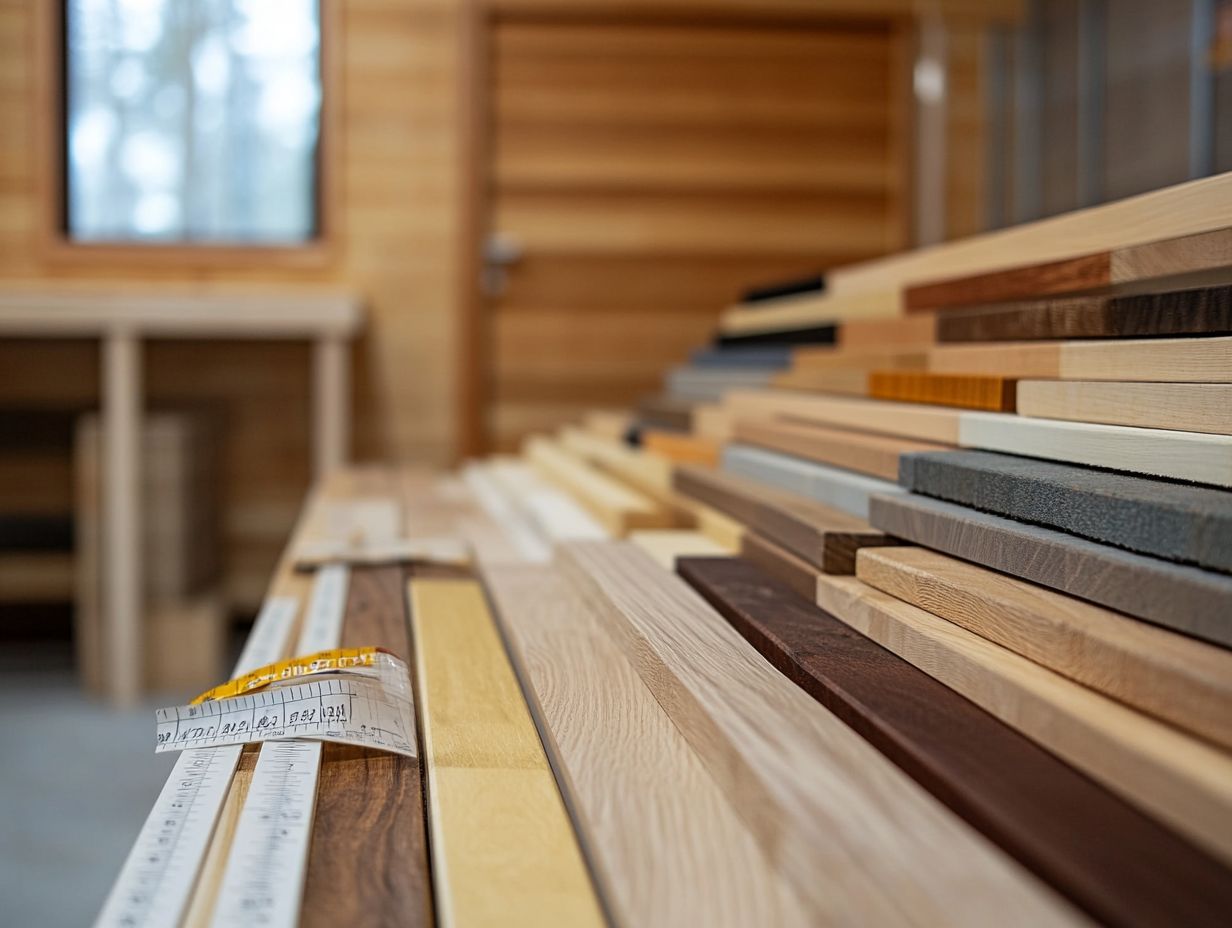
- Properly choosing the right wood for your sauna is crucial for both functionality and aesthetics.
- Popular wood options for saunas include cedar, hemlock, and spruce, each with unique characteristics to consider.
- When selecting sauna wood, factors such as budget, desired look, and durability should be taken into account.
Why Choosing the Right Wood Matters
Selecting the right wood for your sauna experience is essential, not only for its visual charm but also for crafting a comfortable and therapeutic environment that amplifies the benefits of heat and aroma during your sessions.
Each type of wood, be it cedar, hemlock, aspen, birch, oak, or maple, brings its own unique qualities that affect durability, moisture resistance, and thermal properties. Making the right choice can profoundly influence your sauna’s insulation, heating efficiency, and overall ambiance. For more insights, consider these practical tips for choosing a home sauna, making this decision critical for both indoor and outdoor sauna builds.
Types of Wood for Saunas
When constructing your sauna, you have a variety of wood types at your disposal, each bringing its own unique qualities to elevate your sauna experience. Consider popular choices like cedar, hemlock, aspen, birch, oak, and maple each offering distinct characteristics in aroma, appearance, and moisture resistance.
You can also explore options like eucalyptus, redwood, and Nordic spruce, which add versatility to your selection, allowing you to personalize both the aesthetics and functionality of your space.
By understanding these wood types, you can confidently choose what best suits your indoor or outdoor sauna needs.
Commonly Used Woods and Their Characteristics
When selecting wood for your sauna, you’ll find that options like cedar, hemlock, aspen, birch, oak, and maple each bring their own unique traits and benefits to enhance your sauna experience.
The thermal properties of these woods are crucial in creating a comfortable and inviting atmosphere within your sauna. Cedar, for instance, boasts natural oils that not only provide a pleasant aroma but also enhance its resistance to warping and decay. If you’re considering adding a sauna to your home, check out our guide on choosing the right size sauna for your home, making it a beloved choice among enthusiasts.
Hemlock distinguishes itself with its low thermal conductivity, ensuring the wood remains cooler to the touch, even in elevated temperatures definitely a win for comfort. Aspen, with its bright appearance and smooth texture, doesn t retain heat, allowing you to relish those cooler moments between steam sessions.
Birch catches the eye with its beautiful light color and intricate grain, adding a touch of elegance while also being moisture-resistant. Meanwhile, oak and maple offer impressive durability and energy efficiency, ensuring that you can enjoy your sauna investment for years to come, free from worries about wear and tear. For those interested in enhancing their experience, consider exploring custom saunas that allow you to design your ideal space.
Factors to Consider when Choosing Sauna Wood
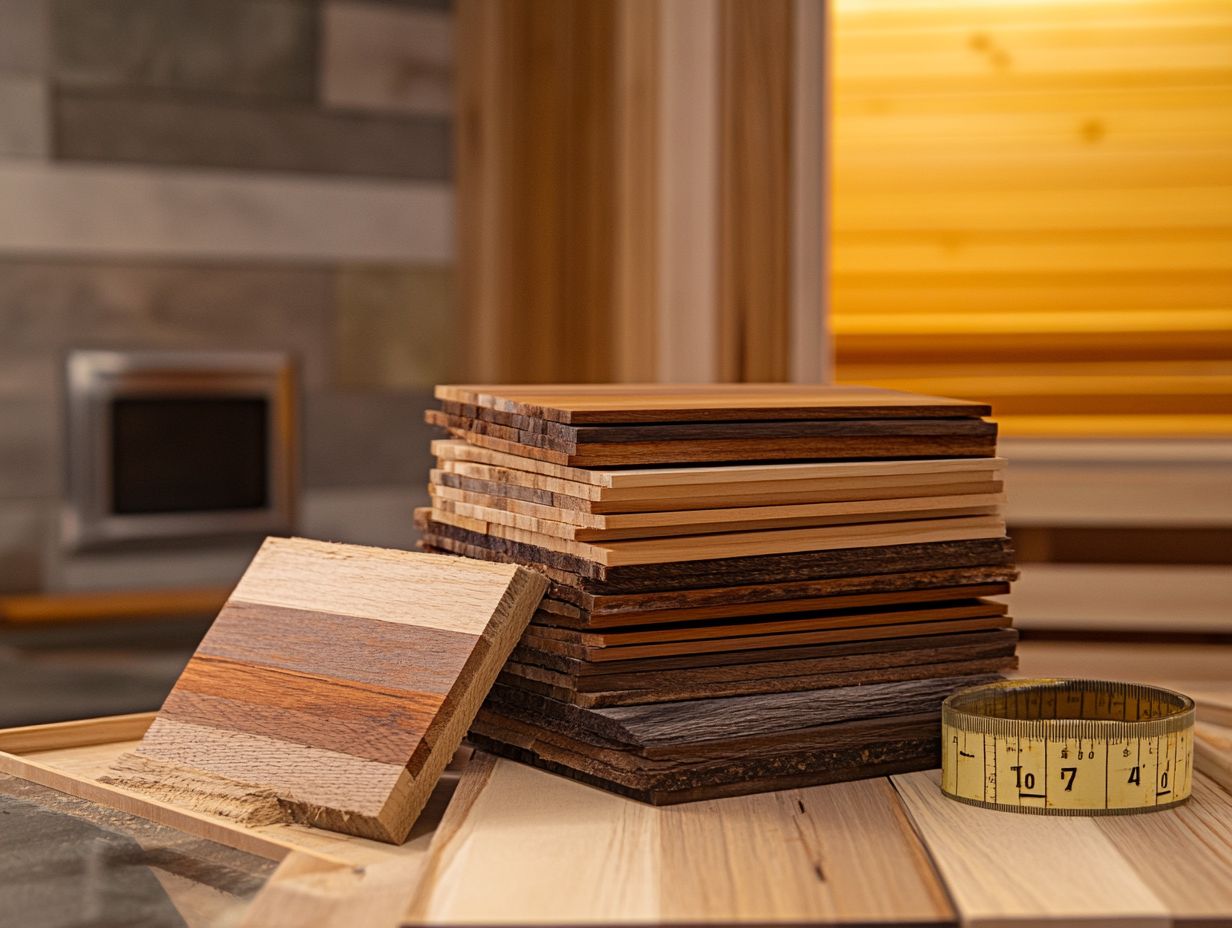
When choosing the perfect wood for your sauna, several essential factors warrant your careful consideration to ensure optimal performance and longevity. You ll want to keep budget constraints in mind, alongside your aesthetic preferences. The wood’s durability against moisture and high temperatures is paramount, as these elements directly impact the sauna’s energy efficiency and insulation properties.
Understanding the wood’s ability to absorb moisture is crucial for maintenance and safety. This understanding will help you create a comfortable and effective sauna experience that stands the test of time.
Ready to choose the best wood for your sauna? Dive into the selection process today and transform your sauna experience!
Budget, Aesthetics, and Durability
Balancing your budget, aesthetics, and durability is crucial when selecting wood for your sauna. Each factor significantly influences your overall experience and its functionality.
While some wood types may be easier on your wallet, they might fall short in terms of visual appeal or durability compared to higher-quality alternatives. For example, budget-friendly softwoods like pine can bring a rustic charm to your space, but they may struggle to endure the intense heat and humidity that saunas are known for. Understanding the impact of sauna size on effectiveness can also influence your choice of materials.
On the other hand, premium hardwoods like cedar or hemlock elevate the visual allure and provide superior moisture resistance. This makes them the smart choice for long-lasting installations.
By carefully evaluating these factors, you can make informed decisions that fit your financial plans. You ll achieve a sauna that s both beautiful and functional.
Understanding the relationship between wood density and heat retention helps optimize energy use. This ensures your sauna remains a cozy retreat no matter the season.
Preparing the Sauna Wood
Preparing the wood for sauna use is an essential step that demands your attention to detail. This ensures longevity and safety.
The process starts with a meticulous cleaning to eliminate any dust or contaminants that might harm the wood s natural properties. After the wood is squeaky clean, applying protective treatments enhances moisture resistance and minimizes the risk of mold or mildew development.
This preparation helps create a safe and inviting sauna. It ensures you can relax without worry.
When the wood is properly treated, it preserves its aesthetic appeal and maximizes thermal efficiency. This elevates the entire sauna experience to new heights.
Cleaning and Treating the Wood for Sauna Use
Cleaning and treating wood for sauna use requires your meticulous attention to detail. This ensures the wood remains in optimal condition for an exceptional sauna experience.
Begin with a thorough cleaning process to eliminate any dirt or debris. This helps prevent contamination of your sauna environment.
Next, treat the wood with mold prevention treatments to enhance its durability and moisture resistance. This preserves the wood’s natural qualities while creating a safe and comfortable atmosphere for your sauna sessions.
For the best results, use a mixture of mild soap and water for cleaning. Avoid harsh chemicals that could damage the wood. Afterward, applying a high-quality wood treatment like teak oil or tung oil can significantly boost moisture resistance and longevity.
These oils penetrate deeply, forming a protective barrier against dampness. Antifungal agents like borate can also be sprinkled or sprayed onto surfaces to deter mold growth.
Regular maintenance, including periodic reapplication of these products, will keep the wood looking not only functional but also pleasing to the eye. This allows you to fully enjoy a truly rejuvenating sauna experience and helps you choose the right sauna type for you that supports your relaxation goals.
Tips for Maintaining Sauna Wood
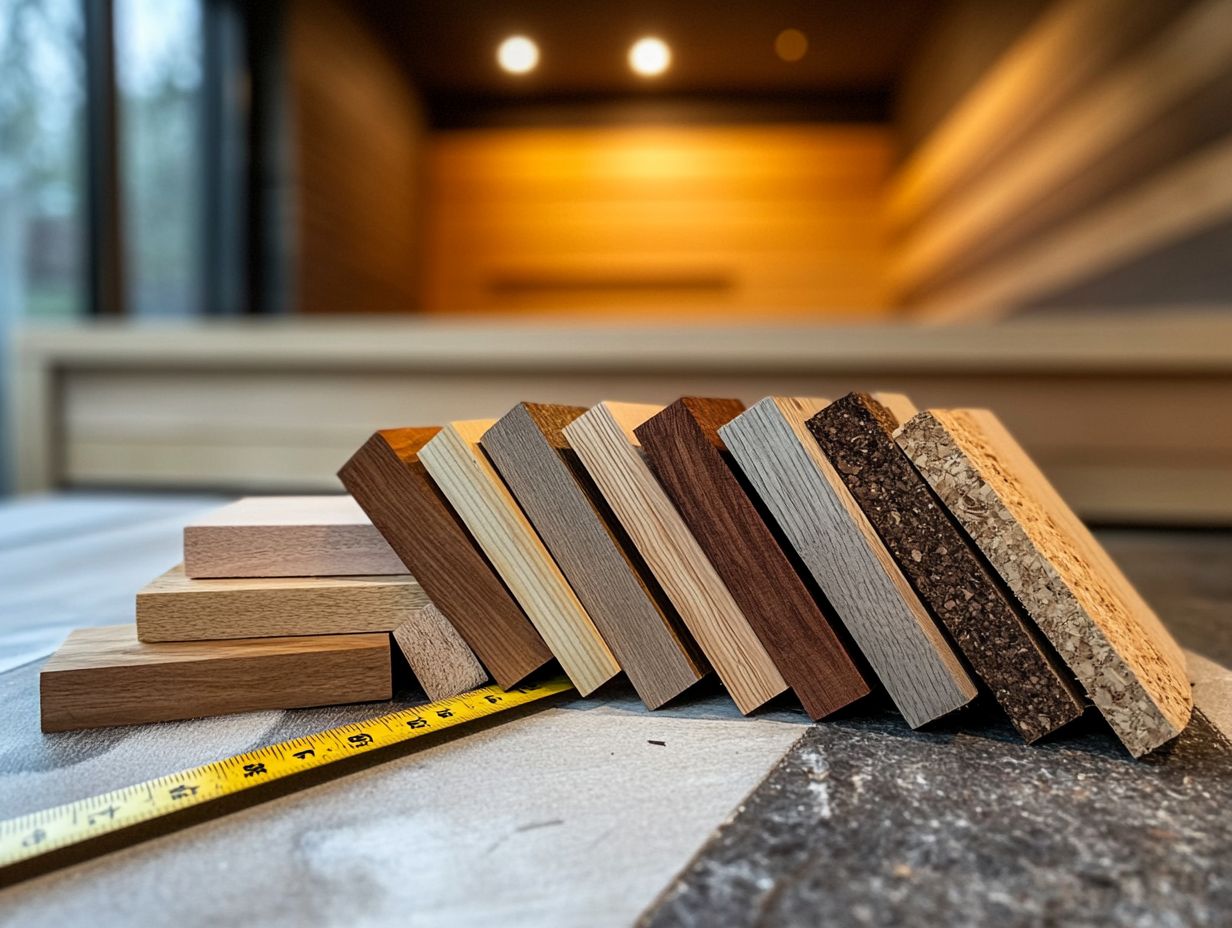
Maintaining sauna wood is crucial for preserving its longevity and enhancing the therapeutic benefits of your sauna experience. Regular cleaning is key to keeping your sauna fresh and inviting!
- Regular cleaning
- Monitoring moisture levels
- Ensuring proper ventilation
By dedicating time to this maintenance, you not only prolong the life of the wood but also nurture the overall ecosystem of your sauna environment. This creates a healthier and more enjoyable space for your relaxation and rejuvenation.
Proper Care and Maintenance for Longevity
Proper care and maintenance of your sauna wood are essential for its longevity and performance in high-temperature conditions. By implementing routine checks for moisture levels and ensuring adequate ventilation, you can prevent damage and extend the life of the wood. Choose materials with natural resistance to moisture to support a balanced ecosystem within the sauna, enhancing your overall experience.
Incorporate a regular cleaning routine by wiping down surfaces with a gentle, natural cleaner to eliminate harmful residues that attract moisture and lead to decay. Monitor the humidity levels inside the sauna, keeping them within an optimal range to prevent excessive wood swelling or shrinkage. If you’re considering sauna options, learn how to choose a sauna based on your health. A dehumidifier can be a valuable asset, especially in regions with high natural humidity.
Consider an oil treatment with sustainable options every few months to nourish the wood, boosting its durability while ensuring your practices align with eco-friendly standards. This approach ultimately contributes to the enduring quality of your sauna experience.
Frequently Asked Questions
What factors should I consider when choosing the right wood for my sauna?
When choosing the right wood for your sauna, consider durability, heat resistance, moisture resistance, and overall appearance. Choose wood that not only performs well but also looks stunning!
What types of wood are recommended for saunas, and what are their qualities?
Cedar, pine, and spruce are commonly recommended types of wood for saunas. These woods are known for their durability, heat resistance, and ability to withstand high levels of moisture.
Why is cedar a popular choice for sauna wood?
Cedar is favored for sauna wood because it has natural oils and resins that make it highly resistant to rot, mold, and decay. It also has a pleasant aroma that enhances the overall sauna experience.
Can I use pressure-treated wood for my sauna?
No, pressure-treated wood should not be used for saunas as it contains chemicals that can emit harmful fumes when exposed to high temperatures. Stick to using natural, untreated wood for your sauna.
Do I need to treat or finish the wood for my sauna?
If you are using cedar, pine, or spruce, you do not need to treat or finish the wood, as these types are naturally resistant to moisture and decay. However, if you choose a different type of wood, it may require a sealant or stain for protection against moisture.
Is it okay to mix different types of wood in my sauna?
Yes, it is okay to mix different types of wood in your sauna. Many people use various woods for the walls, benches, and flooring to add visual interest and variety. Just ensure all the wood you choose is suitable for sauna use.

